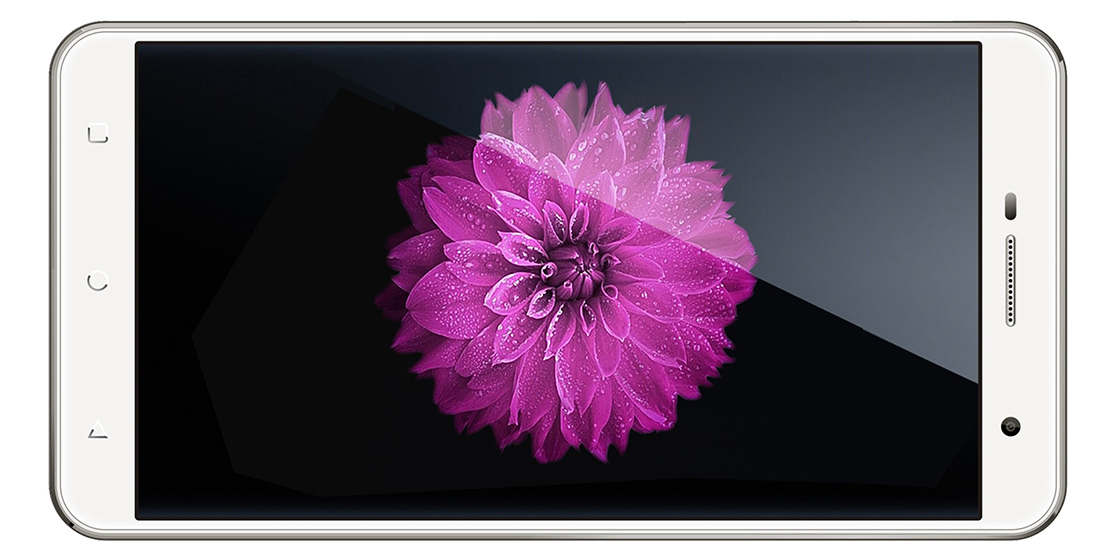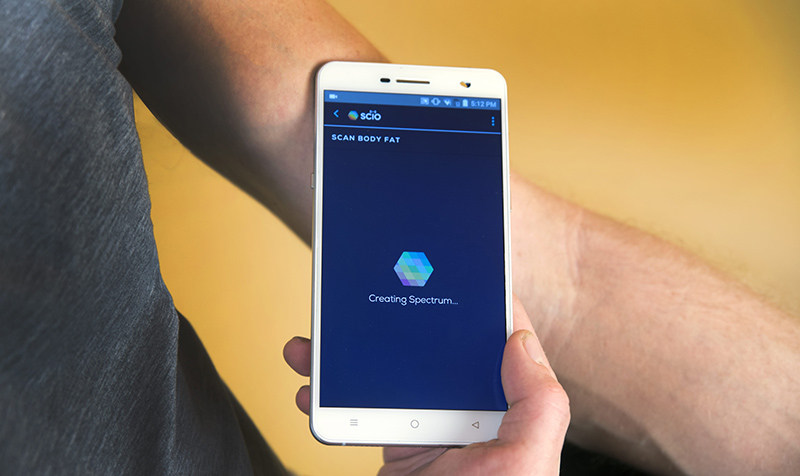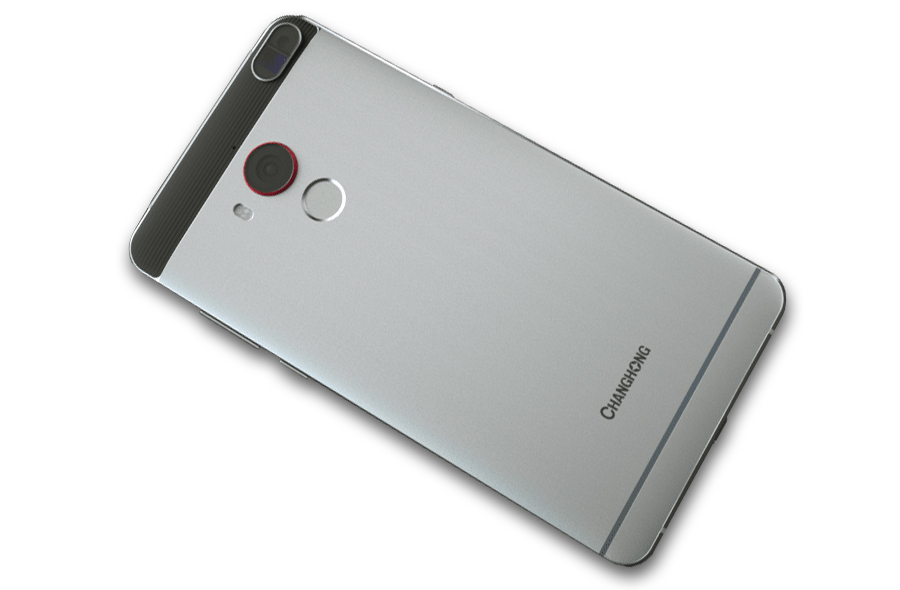SCiO Molecular Sensor Added to Smartphone: Reads Chemical Composition of Materials
by Matt Humrick on January 9, 2017 2:20 PM EST- Posted in
- Smartphones
- Mobile
- SCiO

I first saw Consumer Physics’ SCiO handheld scanner a couple of years ago and was impressed by its ability to identify materials by scanning and analyzing their chemical composition. In the intervening years, Consumer Physics has partnered with Analog Devices to increase the sensor’s accuracy and reduce its size, and at CES 2017, the company announced the first smartphone with an integrated SCiO sensor, making this technology even easier to carry and use.
The Changhong H2 has a 6-inch 1080p display and a 16MP rear camera. Inside is an octa-core CPU running at up to 2.0GHz paired with 4GB of RAM and 64GB of internal storage, all powered by a 3000mAh battery. The H2’s standout feature, though, is the new sensor.
The SCiO sensor uses near-infrared spectroscopy to identify a material’s molecular content. By illuminating an object with a broadband light source and using the spectrometer, a type of optical sensor, to break the reflected light into its constituent components, SCiO’s signal processing algorithms compare the reflected light’s wavelengths to the original emission to create a spectral fingerprint. This technique works because molecules will only absorb photons at certain energy levels, which means specific wavelengths will be missing or attenuated in the reflected light.
The Changhong H2’s sensor allows you to virtually “taste” food, measuring the sweetness of fruit for example, or measure how ripe fruits and vegetables are. It can identify specific liquids, tell you if the pills in an unmarked bottle are vitamins or a prescription pain killer, or even tell you if the Viagra you bought online from that sketchy website is real or fake. You can even use it to measure body fat and analyze the nutritional content of food.
The SCiO sensor module sits next to the camera on the back of the Changhong H2. Scanning an object involves opening an app and placing the sensor close to its surface, within 0.5-2.0 cm. It takes about 1.5 seconds to collect data. The app then compares the material’s spectral fingerprint to thousands of others stored in a cloud-based database for identification, as shown in the demonstration below.
Consumer Physics is working with companies to integrate its sensor into other products as well, such as the DietSensor scale—it also makes an app for the Changhong H2—that scans and weighs food to determine the calorie count and ratio between carbohydrates, fat, and protein. There’s also an SDK for third-party developers to develop apps that leverage the sensor’s capabilities.
The Changhong H2 will be available in China for 2999 RMB starting in June 2017 and will come to the US and other regions later in the year.













19 Comments
View All Comments
jwcalla - Monday, January 9, 2017 - link
This is very interesting. I doubt it can measure bodyfat accurately and for the average consumer I think the novelty will wear off eventually, but it'll be nice to see what people do with it.Gc - Monday, January 9, 2017 - link
Such a phone sensor might benefit people with serious allergies if it is sensitive enough.Is it sensitive enough to detect low levels of allergens? Such as peanut oil or shellfish oil mixed into a sauce or cake, for people allergic to peanuts or shellfish.
How deep into food does the near-infrared light penetrate and reflect? Such as foods wrapped in a pasta, pastry, or candy, or frosting.
Is it effective through through plastic wrap? cardboard?
Examples shown in video are unwrapped, but use cases such as muscle fat analysis require penetrating a skin. (Fruit and pills may also have a skin or shell.)
Matt Humrick - Monday, January 9, 2017 - link
It is not sensitive enough to detect very low levels of an allergen (think trace amounts). And while it can detect slightly higher concentrations, the company is not focusing on this application for liability concerns.MrSpadge - Tuesday, January 10, 2017 - link
A lot of materials are active in some way or another in the near-IR. There are some general trends, though:- organics: the "fingerprints" being used here, mostly transparent otherwise
- dielectrics: mostly weak absorption
- metals: reflecting, small absorption
So the penetration depths obviously depends on the specific material composition... and the wavelength of interest. Even if a material absorbs 2/3 or the wavelength range, it might suffice to detect 2 or 3 fingerprints in the remaining spectrum of you know approximately what you're looking at. Furthermore organic materials usually strongly scatter incoming light, limiting the penetration depth further. So I suspect most of the things you've asked for won't work, with the caveat "it depends".
boeush - Tuesday, January 10, 2017 - link
I can see this being really popular with [illicit] drug users. When you're about to buy that pill or powder off a stranger on a street corner, sure would help to know what's in it before you swallow, shoot, inhale, or smoke to find out the hard way... Dealers would also find it useful, as a quality assurance device for their merchandise....But I'm totally SURE the makers of this device had no such use cases or markets in mind, not at all! (Wink, wink, nudge, nudge.)
SydneyBlue120d - Tuesday, January 10, 2017 - link
Coming soon to Snapdragon 2018 SOC?shadarlo - Tuesday, January 10, 2017 - link
This seems pretty amazing.... analyzing food content and body fat alone would be enough for me to seek this phone out among a sea of competitors.NoSoMo - Thursday, January 12, 2017 - link
What about using pico lasers? Looks like we're rapidly approaching the star trek tricorder devices (or whatever it's called)helvete - Tuesday, February 7, 2017 - link
This could be useful for measuring quality of narcotics:-)